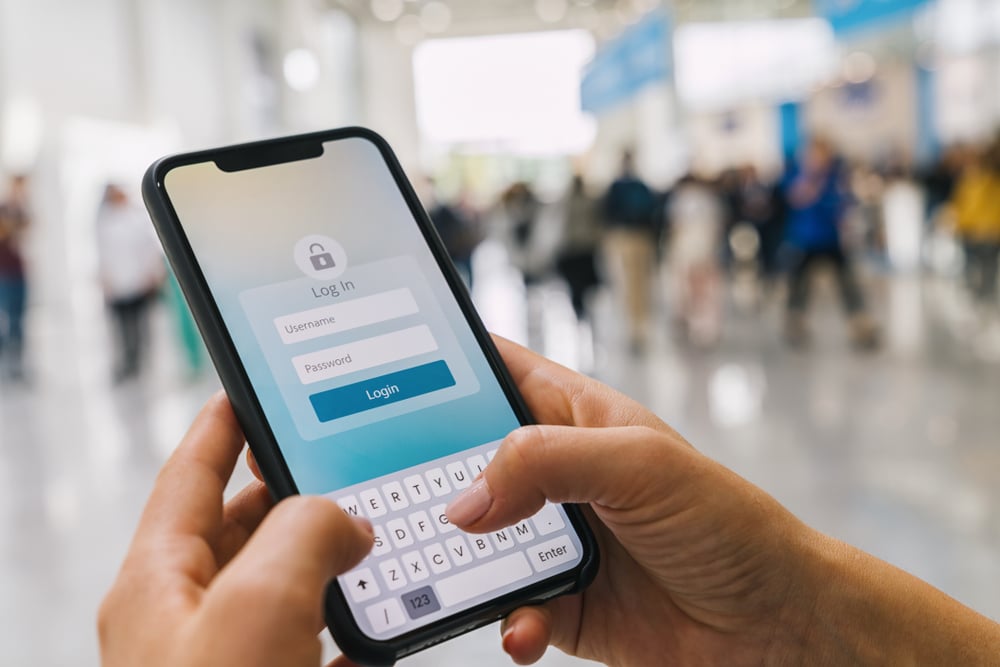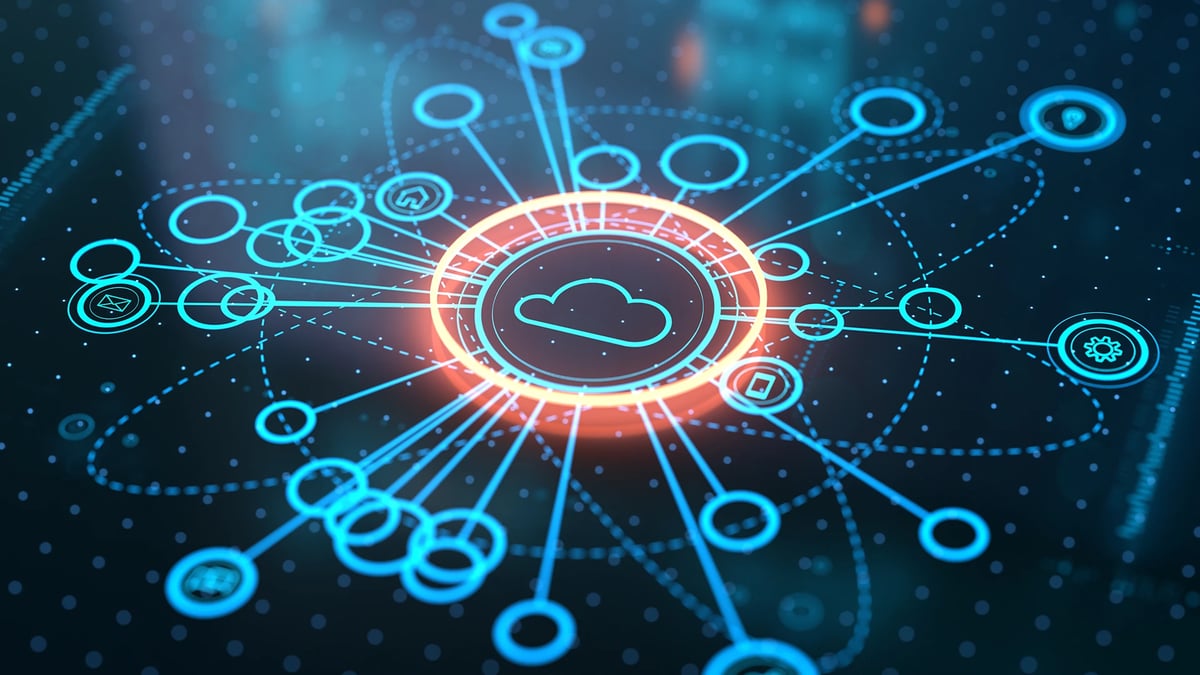Protect your business against ransomware attacks
A strong defense against ransomware requires you to proactively address flaws before they’re leveraged in attacks. Identifying flaws and incorrect configurations throughout your attack surface is essential to reduce your business' risk. Don't wait for an attack before taking action. Let Holm Security assist you in proactively defending against cyber threats and identifying security flaws before they become business-impacting issues.
How ransomware quickly infiltrates your organization
Malicious emails
Most ransomware attacks begin with a seemingly legitimate email from a trusted source or well-known brand.
Downloading content
The email tricks the recipient into unknowingly downloading and running a virus, either via an attachment or a link to a compromised website.
Infecting & spreading
The virus infects the computer and tries to spread throughout the organization's network by exploiting vulnerabilities. The result is widespread damage to the affected systems.
Demanding ransom
The cybercriminal either steals sensitive information and demands payment to prevent its release or encrypts all local files, requiring a ransom payment (often in the form of bitcoin) to unlock them.
.png?width=1200&height=852&name=Attack-Vector%202%20(1).png)
Secure your workforce
Talk to a cyber security expert today
We’ll help you take steps to protect your business. Get in touch today!
Protect your business from ransomware attacks
Awareness training
With a strong human defense, your organization can significantly decrease the risk of ransomware attacks and data leakage incidents. Use phishing simulations to continuously test your employees' ability to withstand attacks.
Maintain anti-virus
Maintain up-to-date anti-virus software and ensure the software verifies all other software downloaded from the internet.
Continuous backups
Continuously back up data and create a recovery plan for critical information. Regularly test the recovery process to make sure the backup works as intended. Keep backups separate and offline to ensure they aren't infected or sabotaged.
Restrict user permissions
Restrict employees’ ability to install and run unwanted software locally. Promote using central managed or cloud services to limit the need to install software locally on the employees’ machines.
The right defense against any cyber security concerns



Your biggest security risks start with an email
Equip your employees with the knowledge and tools they need to identify and respond to phishing attempts and other email-based threats. Educate people as individuals and focus your training efforts where needed most to drastically reduce the risk of successful attacks.
Empower your employees & boost security
Strengthen your overall security and keep your business safe by providing your employees with the tools and expertise needed to identify and respond to threats.
Keep your business safe with education
Reduce the risk of data breaches and financial losses. Protect your business and keep your sensitive data safe from cybercriminals by regularly educating your employees about cyber security best practices.
Find vulnerabilities across your technical assets
Get complete visibility into your IT environment so you can identify potential vulnerabilities and take proactive steps to address them. With our comprehensive approach to cyber security, we provide you with everything you need to know to keep your business safe and secure. From identifying your most significant attack vectors to staying on top of the latest threats, we help protect your business.
Identify over 150,000 vulnerabilities
Perform regular scans to identify potential vulnerabilities and prioritize them based on their level of risk. Achieving complete visibility over your IT infrastructure has never been easier.
Never worry again with complete visibility
Discover, assess, and fortify your environment against digital risks by contextualizing your attack surface coverage across your networks and endpoints.
Continuously monitor, identify & remediate misconfigurations
Cloud Security is a comprehensive cloud security posture management (CSPM) solution that continuously detects misconfigurations, policy violations, and compliance risks in cloud environments, including cloud-native services. Easily scan your cloud providers for configuration issues that could put your security at risk. We offer support for Microsoft Azure, Amazon Web Services (AWS), and Google Cloud and provide coverage for multiple cloud services.
Discover & take control of misconfigurations
Get complete visibility and actionable context on your most critical misconfigurations. Stay one step ahead of cybercriminals by securing your cloud native environment like never before.
Get a bird's eye view of your multi-cloud environment
Keep your finger on the pulse of your entire cloud environment. Cloud Security provides multi-cloud visibility and asset management.
Secure your workforce
Talk to a cyber security expert today
We’ll help you take steps to protect your business. Get in touch to find out more.
See the difference a
Next-Gen Vulnerability Management
platform makes
From local government to industry-leading retailers, discover how Holm Security helps prevent cyber security incidents.
Safeguard your business from cyberattacks
Extend visibility
Know what you're up against. We can help you identify your weak points, categorize the assets that are vulnerable, and pinpoint the most likely threats. This knowledge will help you take action to protect your business proactively.
Prioritize action
Identifying risks is just the first step; you need to act on them. We can help you develop a clear action plan that prioritizes your actions based on the level of threat, potential impact, and your resources.
Communicate risk
Don't keep cyber security risks a secret - communication is key. Get a clear view of your business' cyber risk with our platform, which provides security executives and business leaders with centralized and business-aligned insights, including actionable insights into your overall cyber risk.
Learn more about ransomware protection
What is ransomware?
Ransomware is a type of malware that has the power to hold your valuable information hostage. Picture this: all your important files, databases, and applications are locked away, and you can't access them. The only way to regain control is to pay a ransom to a cybercriminal. But here's the catch: your data is gone forever if you don't pay up.
And it's not just you that's at risk; ransomware can spread like wildfire across a network and target everything from database servers to individual computers, weakening an entire organization in a matter of minutes. With this type of cyberattack, once is never enough; victims are often targeted repeatedly. Don't become a victim. Protect yourself and your organization from ransomware today!
How does ransomware spread?
Ransomware typically spreads through phishing emails, malicious websites, or infected software downloads. The most common delivery method is through a phishing email that appears to come from a trusted source and includes a malicious attachment or a link to a website that downloads the malware. Once the malware is installed, it can spread within a network by exploiting vulnerabilities in unpatched systems. Sometimes, it can also spread through drive-by downloads, where a user unwittingly downloads the malware by visiting a compromised website.
How can I prevent a ransomware attack?
You will need to implement a combination of technical measures and user awareness. Keeping your operating systems, software, and applications up-to-date and patched with the latest security updates will reduce the number of exploitable entry points. Using anti-virus and anti-malware software and practicing safe email habits can also help prevent attacks.
Encourage employees to use strong, unique passwords, enable two-factor authentication, and restrict their ability to install and run the software by providing them with only the minimum permissions necessary. Regularly backing up important data and storing backups in a secure, offsite location can also help ensure that your data can be recovered during an attack.
Finally, regularly audit your systems and networks and educate employees on safe computing practices and the dangers of ransomware to reduce the risk of a successful attack.
What are common types of ransomware?
Crypto-ransomware: this type of ransomware encrypts the victim's files, making them inaccessible until the ransom is paid.
Locker ransomware: this type of ransomware locks the victim out of their computer or device, making it inaccessible until the ransom is paid.
Screen-locking ransomware: this type of ransomware locks the victims' screen and displays a ransom message, demanding payment to unlock it.
Ransomware-as-a-service (RaaS): this is a form of ransomware that is sold or rented to individuals or groups who then distribute it.
Leakware or Doxware: this type of ransomware threatens to publish sensitive information if the ransom is not paid.
It is important to note that the types of ransomware and the methods used to spread it are constantly evolving, so staying informed and taking proactive measures to protect your systems and users is crucial.
What should I do if my business is infected with ransomware?
If your business is infected with ransomware, it is vital to take the following steps:
Disconnect from the network: disconnect the affected computer or system from the internet and the rest of your network to prevent the ransomware from spreading.
Isolate the affected system: isolate the affected system to prevent the ransomware from spreading to other systems on the network.
Contact a professional: contact a professional cyber security firm or IT specialist for assistance in removing the ransomware.
Do not pay the ransom: in most cases, paying the ransom does not guarantee the recovery of your data and may also encourage cybercriminals to continue their malicious activities.
Report the attack: report the attack to law enforcement and relevant authorities, as they may be able to help track down the cybercriminals and recover any stolen data. You may also be required to do so under the NIS2 Directive.
Restore from backups: if possible, restore data from a backup created before the ransomware attack. If a backup is unavailable, trying to recover the data using specialized data recovery tools may be necessary.
Improve security: after the attack, it is essential to improve your security measures to prevent future attacks. This can include updating software and operating systems, implementing better backup and recovery procedures, and training employees to identify and prevent ransomware attacks. Most importantly, a proactive approach to ensuring that your attack surface is constantly monitored for weaknesses and any weakness reinforced will minimize the likelihood of falling victim once more.
Explore our ransomware resources
Whether you're new to cyber security or a seasoned expert, our resources can help you stay up-to-date on the latest threats and strategies for mitigating risk.

Guide: How to prevent phishing
We’ve all seen alarming articles on the rise of phishing and know the devastating consequences a phishing attack can have. Phishing attacks are not only financially devastating but they also impact business reputation and can severely impact business productivity. So, the question is, what can I do about it? Let’s explore some of the best ways you can prevent phishing attacks.

7 ways to recognize email attacks
With the ever-increasing reliance on email in our daily lives, it's more important than ever to stay informed about the potential dangers of email attacks. By the time you finish reading this whitepaper, you'll have a solid understanding of the different types of email attacks out there and the tools and techniques to prevent them from happening to you.

Human firewall - Critical to a cyber defense strategy
Take part in this webinar to learn about today's biggest cyber security challenges for organizations and how to face "the human vulnerability" in your cyber defense strategy. Jonas Lejon, one of Sweden's foremost cyber security experts, talks about current trends for ransomware, data leaks, and how you can prevent, manage and resolve incidents. Thomas Pålsson, Partner at Aspekta AB, takes a closer look at crisis strategies for external PR if a cyber incident occurs.




